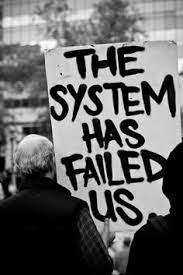
As we approach the start of a new school year, preparations are well underway, hopefully, for effective delivery of course content to our nation’s students. Whether educators choose to employ the transformer or gardener metaphors of teaching there will be some life-altering consequences for students and serious implications for teachers.
Teachers using the transformer approach would typically rely on the students’ current knowledge as a springboard for teaching. The area of critical focus is the development of thinking skills within the student with the teacher acting as facilitator or guide. In contrast to the ‘empty vessel’ teacher, the transformer regards the student as an active participant in the learning process. The learning experience is therefore a more democratic and student-centred one which seems ideal.
While the development of critical thinking skills is a noble and desirable goal, a student whose teacher takes this approach may be at a disadvantage when engaged in a structured course with dense content and limited time. Using the transformer metaphor, the teacher may be challenged to complete the syllabus within the time allotted for covering the course material. In addition, some students may be temporarily unsuited to such an approach. Others may not have the patience required and may become frustrated while others still may feel the need for a more structured approach.
Debatably, in the short run, the disadvantage of inadequate syllabus coverage is often minimal as the causal reasoning ability developed by this approach enables the student to study independently and to transfer knowledge. Students who have acquired this skill tend to be flexible in their approach to problem solving. It therefore becomes unnecessary for the teacher to ‘walk’ the student through the syllabus as would happen with the empty vessel approach.
The transformer approach creates confident students who are eager to learn, which is preferable to merely covering a syllabus just for the sake of doing so without pausing to contemplate how minds are being stimulated or developed. After all, the goal must not be to turn our students into robots. The benefits realised with the transformer approach increase in the long run as the independence and thinking skills fostered create mature individuals who function well both at the post-secondary level and within the workplace. These students can progress further to become effective researchers with the skills developed. Additionally, their confidence and reasoning ability make them effective group workers with qualities that are sought after by employers.
Teachers who represent the gardener metaphor are also noteworthy as they do not regard themselves as the teacher of a subject rather as a teacher of students. In choosing the gardener approach these teachers would seek to tailor learning to each student’s needs. Such teachers would use a nondirective mode of teaching. As far as possible the teacher will be the facilitator and guide, as with the transformer metaphor except that the gardener approach sets broad parameters for learning and allows students to determine methods of achieving these purposes. This may sound risky, but it is worth exploring further.
Short run benefits of the gardener method include enthusiastic students who are the driving force behind the learning process. These students are self-motivating and are very open and flexible. They have highly developed research and negotiation skills and can function independently or in groups.
As with the transformer approach, in the short run, a student whose teacher represents this metaphor may suffer in a content-driven course as they may not be able to cover the required content. Additionally, students who are not self-motivated may be contented with low levels of achievement. Some students may not have the discipline necessary to function in such a laissez-faire environment.
In the long run, students exposed to teachers who represent this metaphor tend to be creative and highly motivated. Such students are willing to take responsibility for their learning and are independent of the teacher. It is this group that may become high achievers.
The art of teaching requires a masterful balancing act as the teacher aims to achieve the twin goals of content coverage and the development of appropriate attitudes to learning and to the world. It is unlikely that strict adherence to any one metaphor can satisfy these two aims. Instead, the teacher must create his or her own blend, reflective of the content to be covered, the student’s stage of education and the student’s affective needs.



